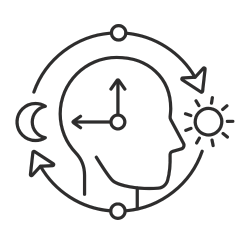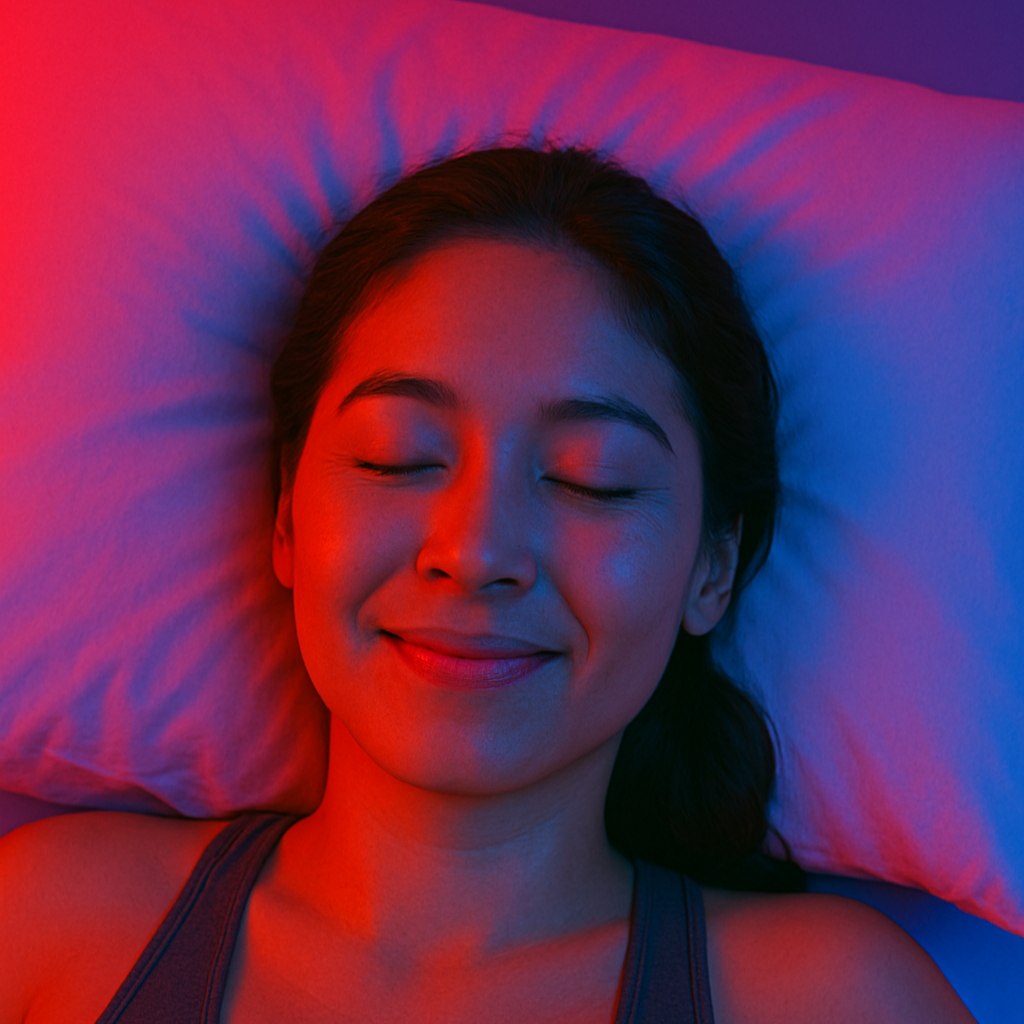
★★★★★ Rated 4.9/5
Experience Deep, Restorative Sleep With Red Light Therapy...
Sleep struggles aren't just inconvenient—they're detrimental to your overall health and quality of life. Research shows our specific red and near-infrared wavelengths can increase melatonin production by up to 70% while regulating your natural sleep-wake cycle for better sleep quality.
Why Solis is recommended by Sleep Specialists:
☑️ Addresses sleep issues without medication dependency
☑️ Supports natural sleep hormone production and regulation
☑️ Enhances sleep quality metrics and recovery processes
Reclaim Restful NightsHow Solis Red Light Therapy Transforms Sleep Quality
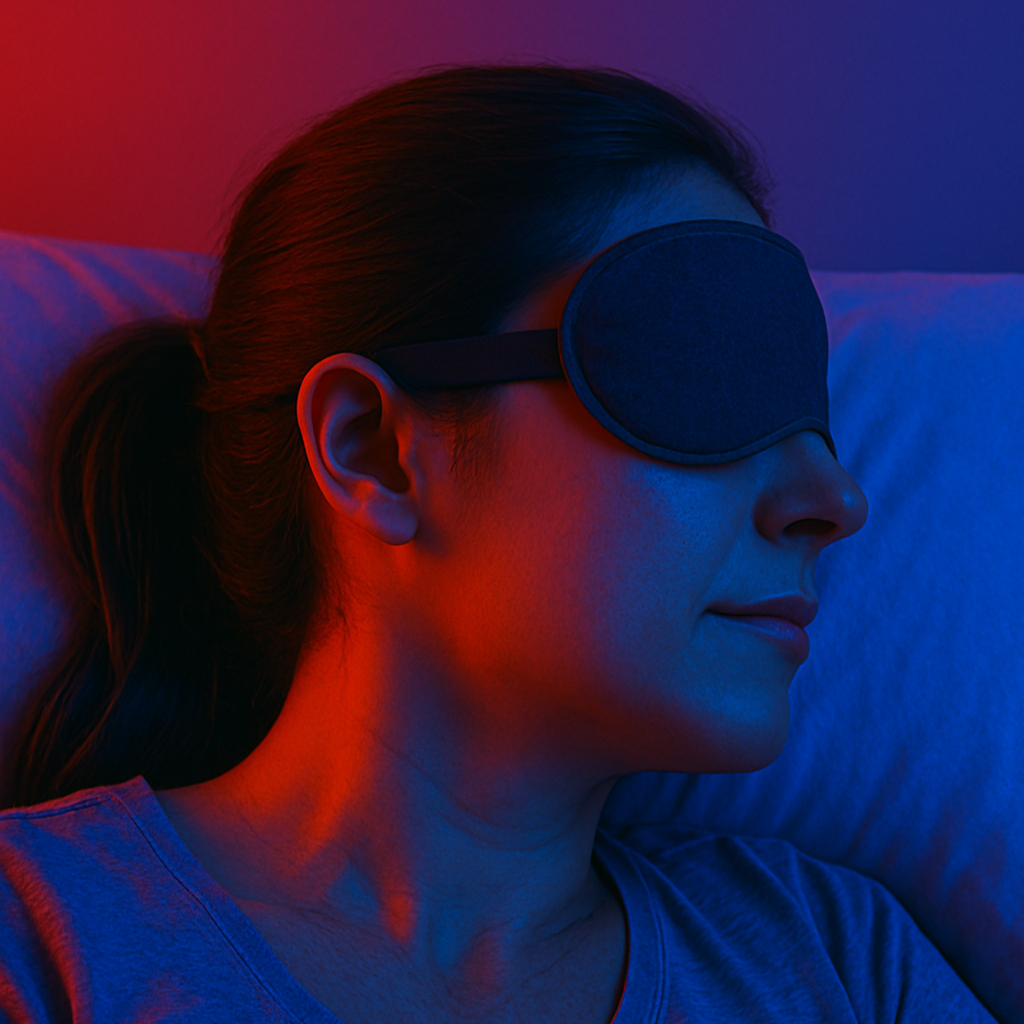
Unlike sleep medications that force chemical changes in your brain, Solis red light therapy naturally signals your body's photoreceptors that regulate your sleep-wake cycle.
The specific 660nm red and 830nm near-infrared wavelengths emitted by our panels are precisely calibrated to communicate with these light-sensitive cells that govern your internal clock.
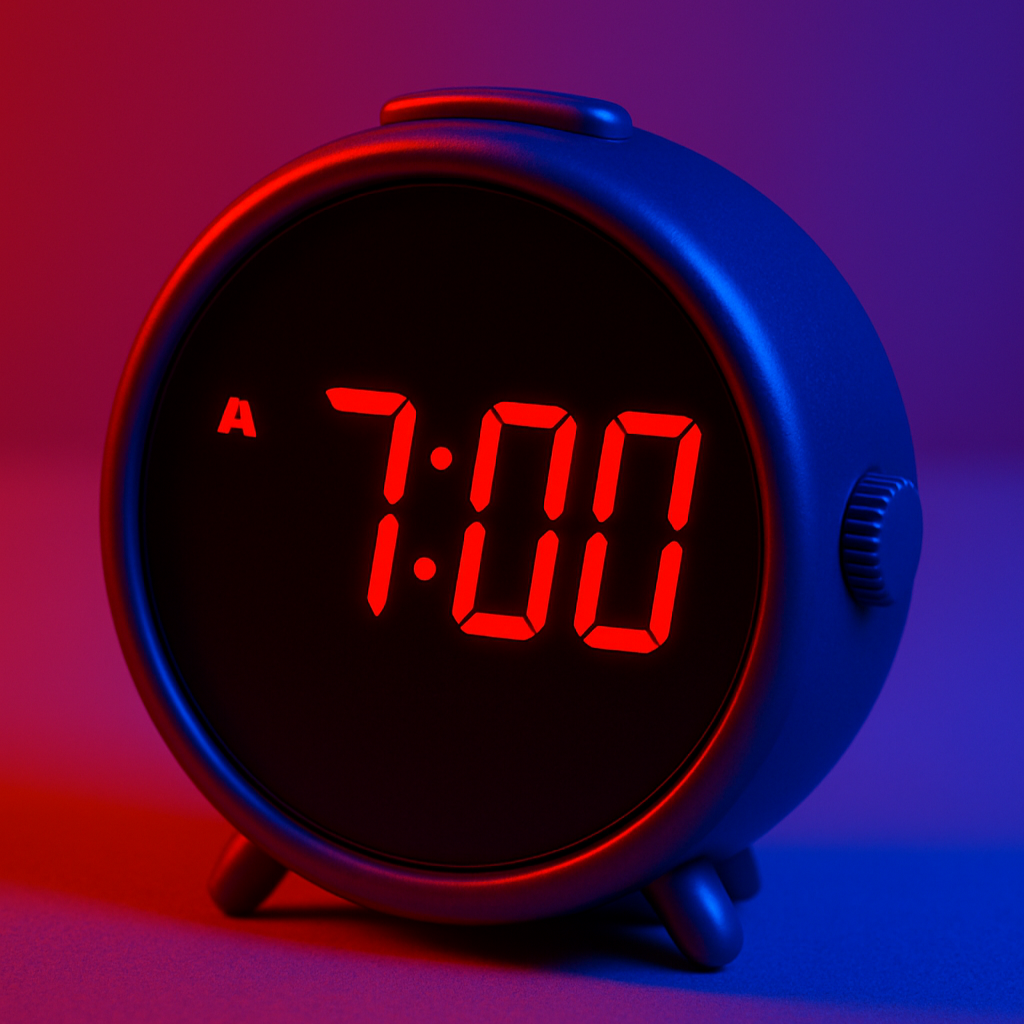
When therapeutic light wavelengths interact with your photoreceptors, they trigger the pineal gland's natural melatonin release while simultaneously suppressing cortisol (the stress hormone that keeps you alert).
This dual action creates the ideal hormonal environment for sleep onset and maintenance without the side effects or dependency of sleep medications.
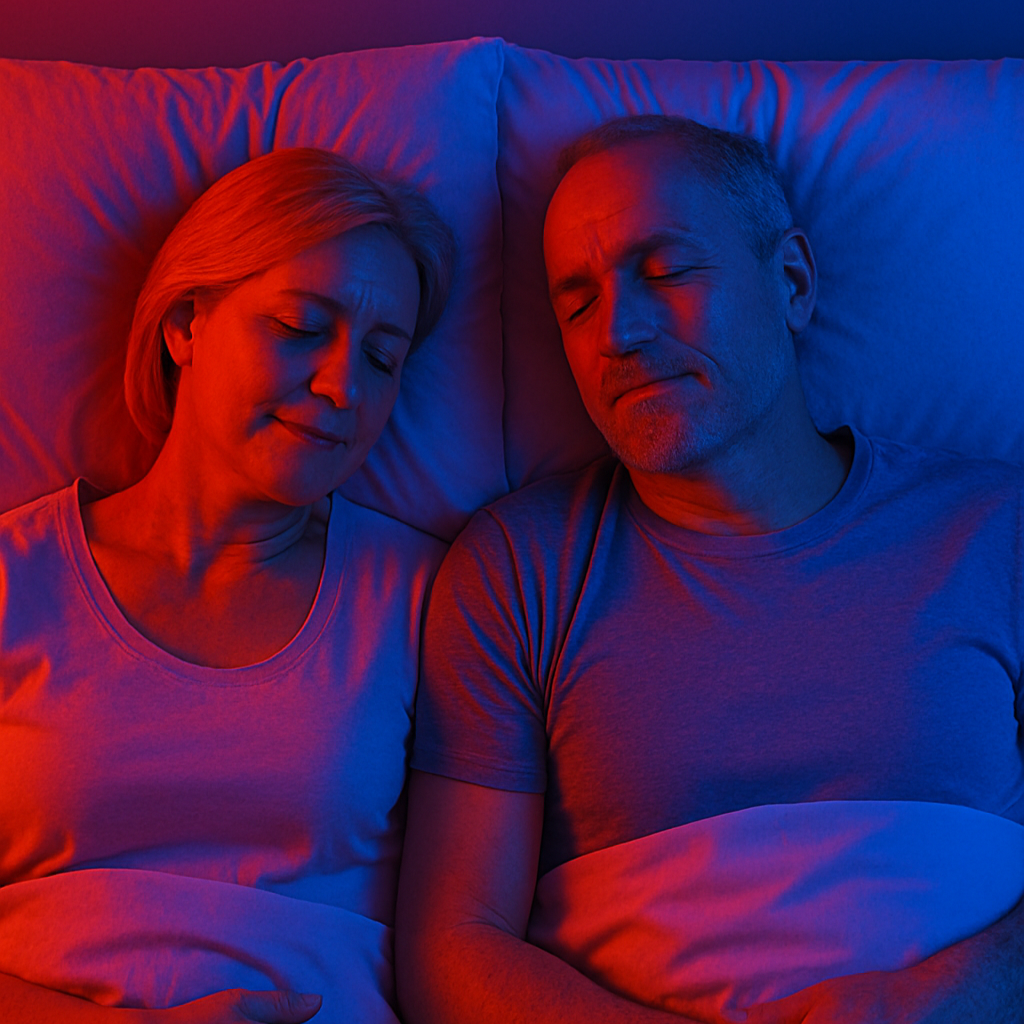
Red light therapy helps your body distinguish between daytime alertness and nighttime rest by filtering out sleep-disrupting blue light frequencies while providing beneficial red wavelengths.
This creates a natural transition period where your body can properly prepare for sleep, allowing your nervous system to shift from "fight-or-flight" to "rest-and-digest" mode.
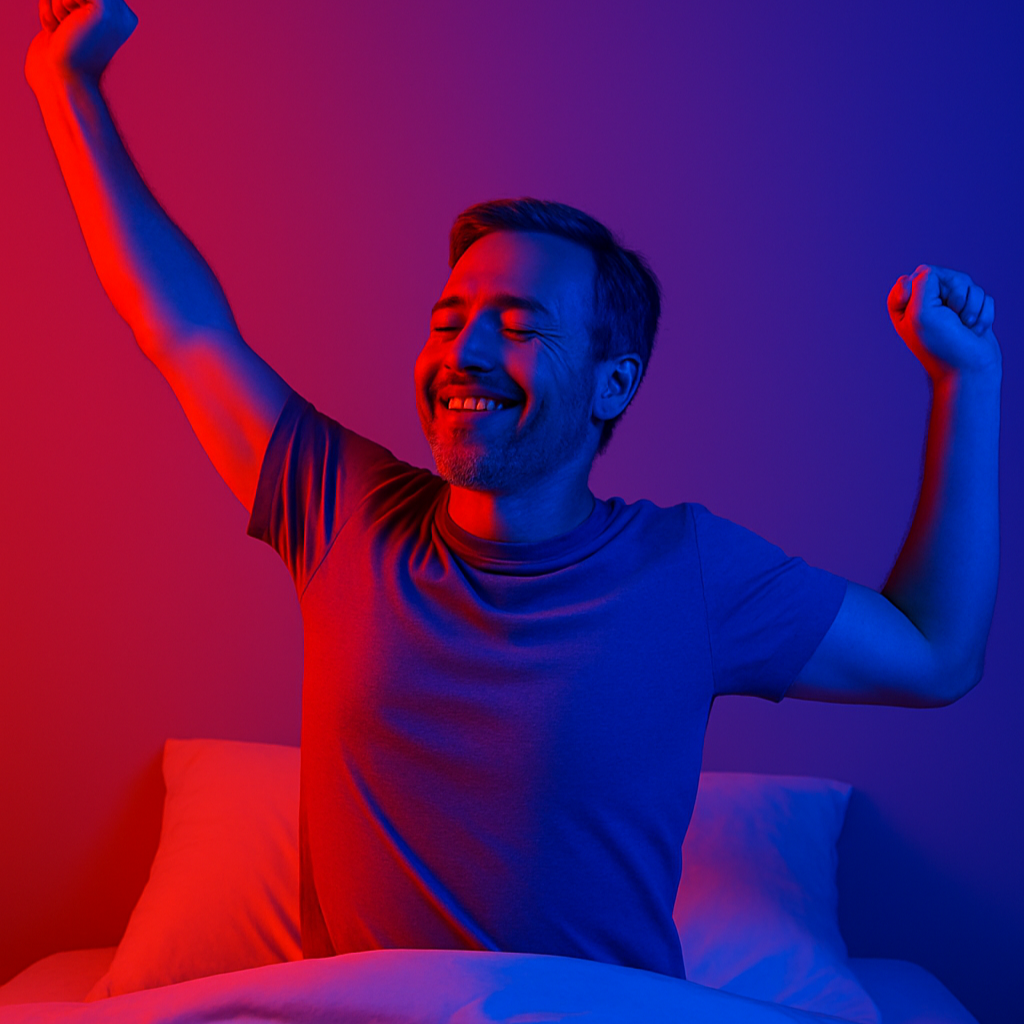
Unlike temporary sleep aids that lose effectiveness over time, red light therapy enhances your body's own sleep regulation systems.
Regular sessions establish more robust circadian rhythms and hormonal patterns, creating progressive improvements in sleep quality that continue to strengthen with consistent use.
Unlike sleep medications that force chemical changes in your brain, Solis red light therapy naturally signals your body's photoreceptors that regulate your sleep-wake cycle.
The specific 660nm red and 830nm near-infrared wavelengths emitted by our panels are precisely calibrated to communicate with these light-sensitive cells that govern your internal clock.
When therapeutic light wavelengths interact with your photoreceptors, they trigger the pineal gland's natural melatonin release while simultaneously suppressing cortisol (the stress hormone that keeps you alert).
This dual action creates the ideal hormonal environment for sleep onset and maintenance without the side effects or dependency of sleep medications.
Red light therapy helps your body distinguish between daytime alertness and nighttime rest by filtering out sleep-disrupting blue light frequencies while providing beneficial red wavelengths.
This creates a natural transition period where your body can properly prepare for sleep, allowing your nervous system to shift from "fight-or-flight" to "rest-and-digest" mode.
Unlike temporary sleep aids that lose effectiveness over time, red light therapy enhances your body's own sleep regulation systems.
Regular sessions establish more robust circadian rhythms and hormonal patterns, creating progressive improvements in sleep quality that continue to strengthen with consistent use.




Our Recommended Product For Sleep Optimisation
Get FREE Blue Light Blocking Glasses (Worth £75)
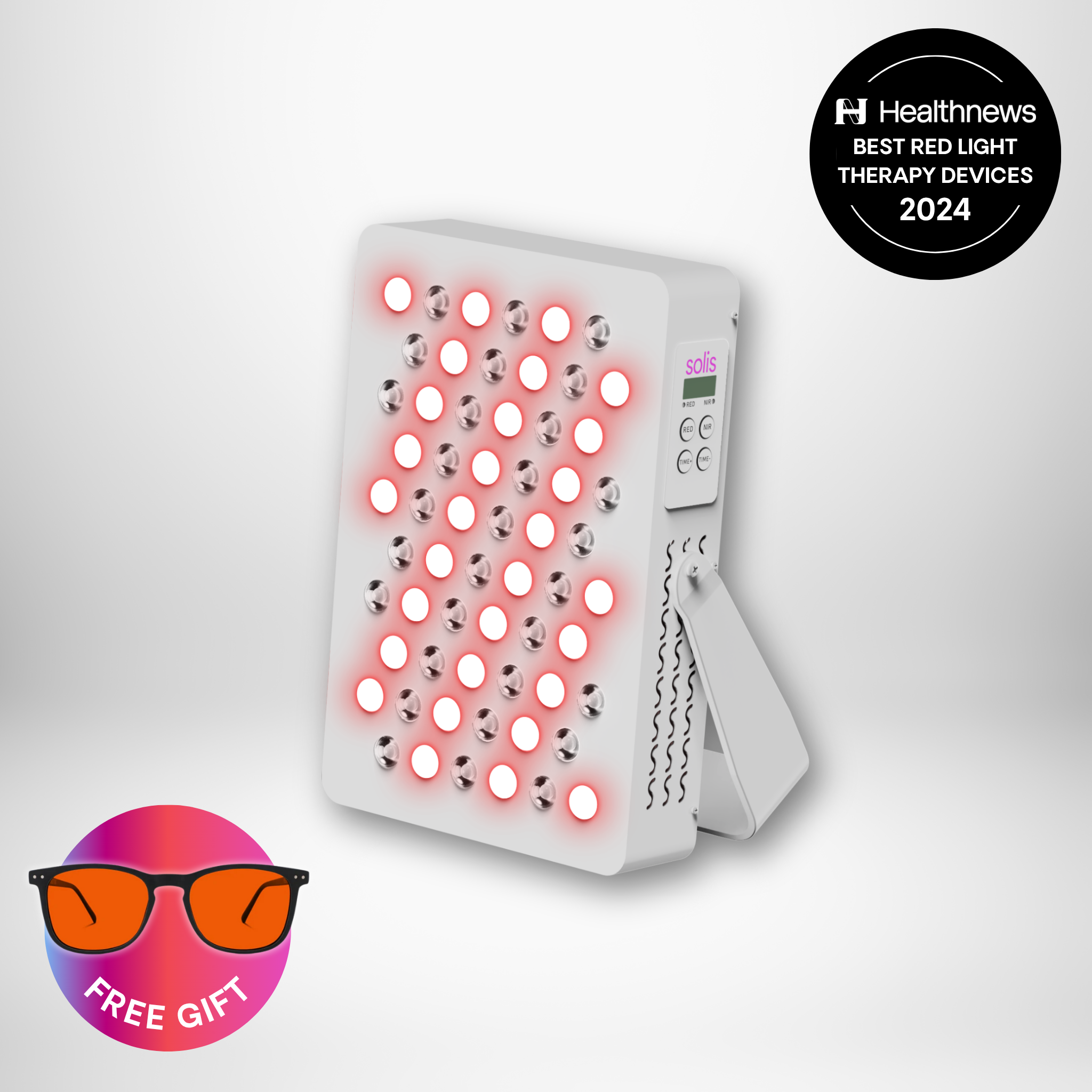
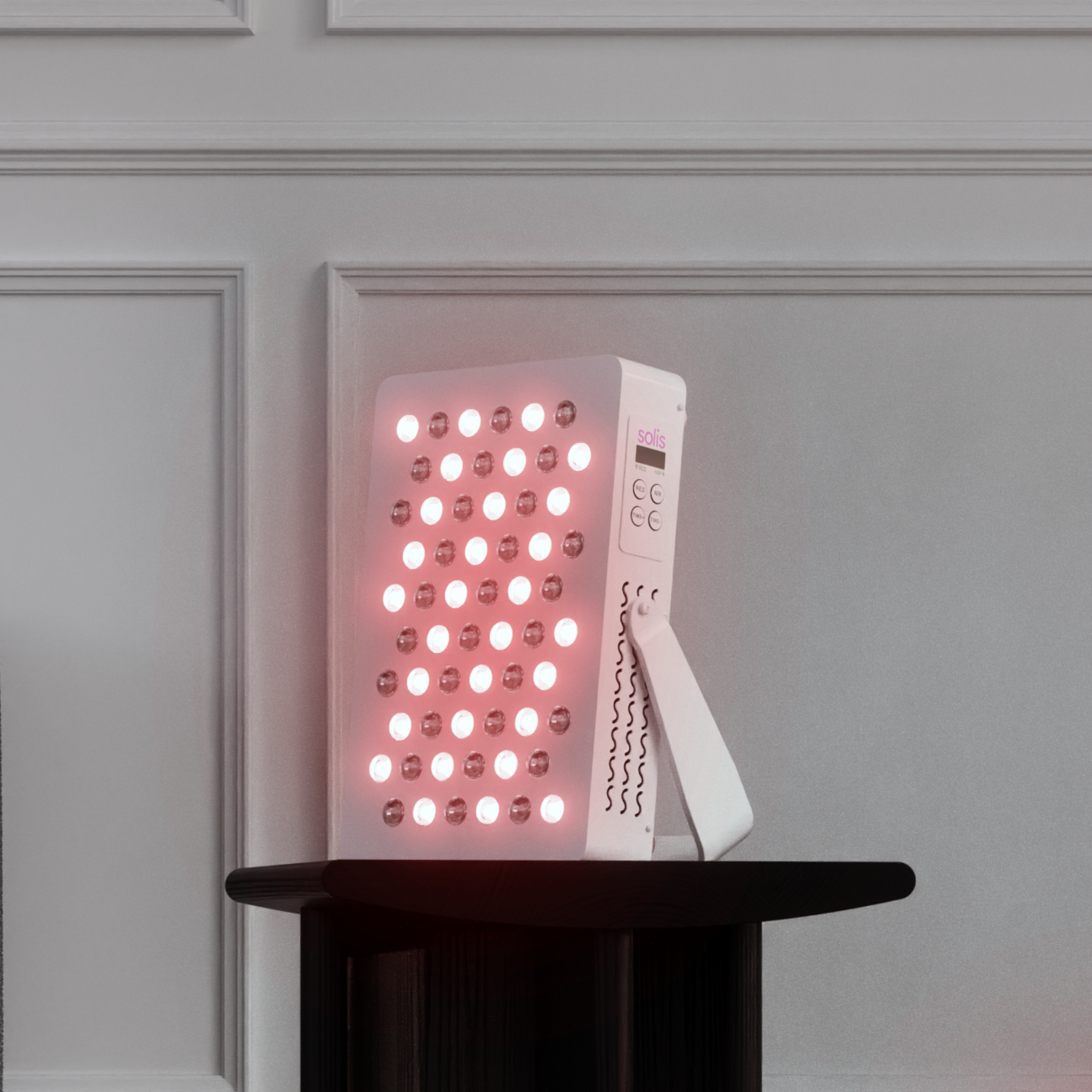
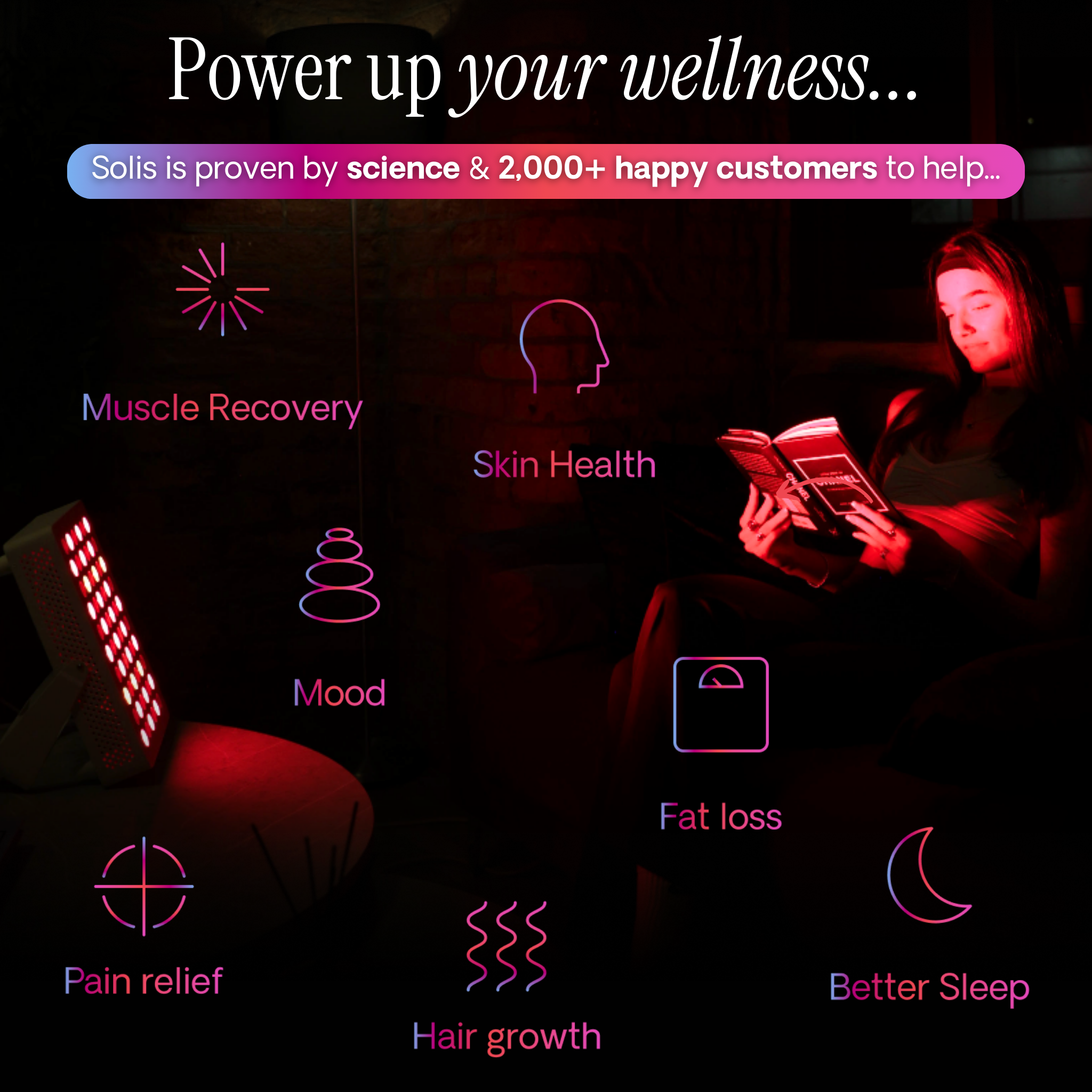
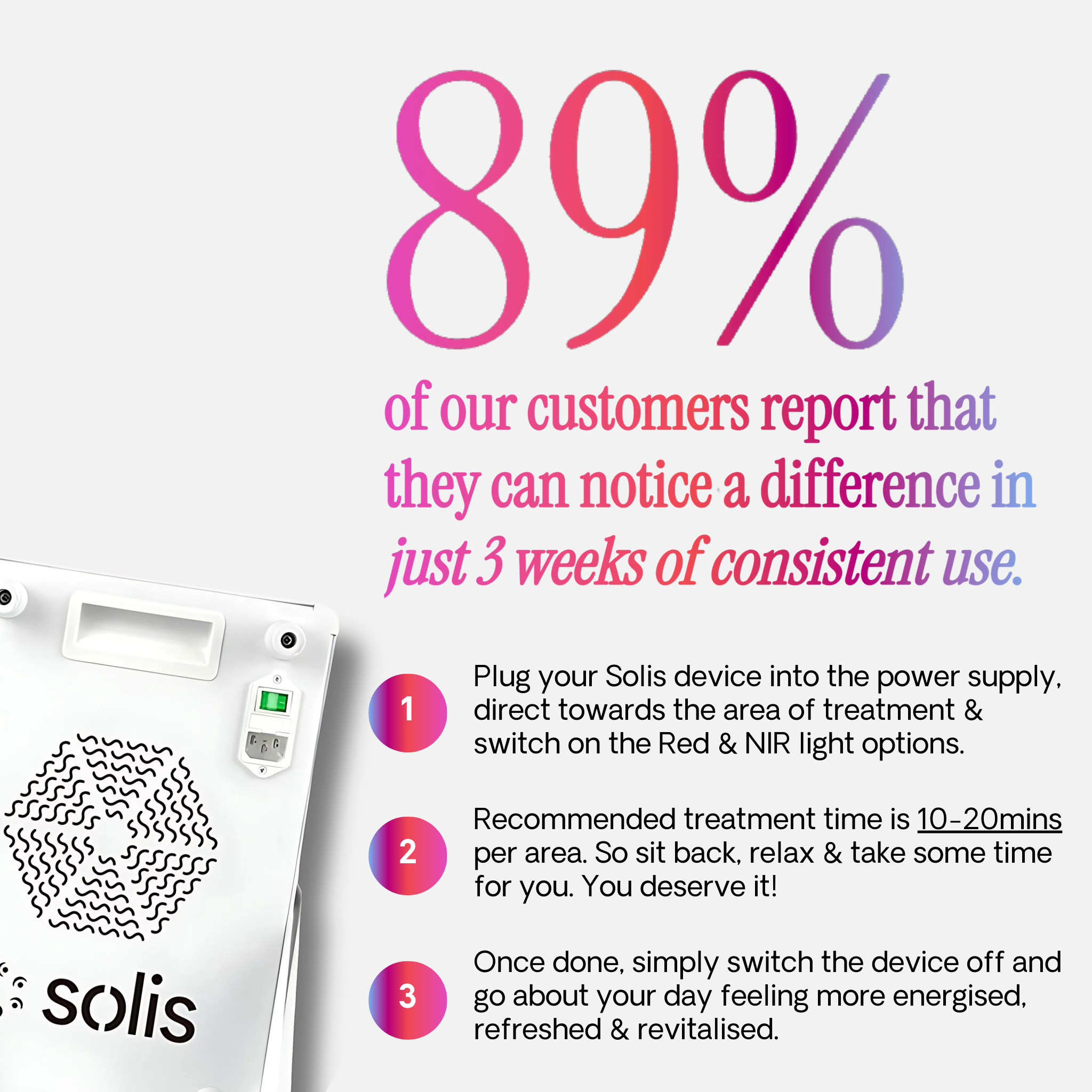
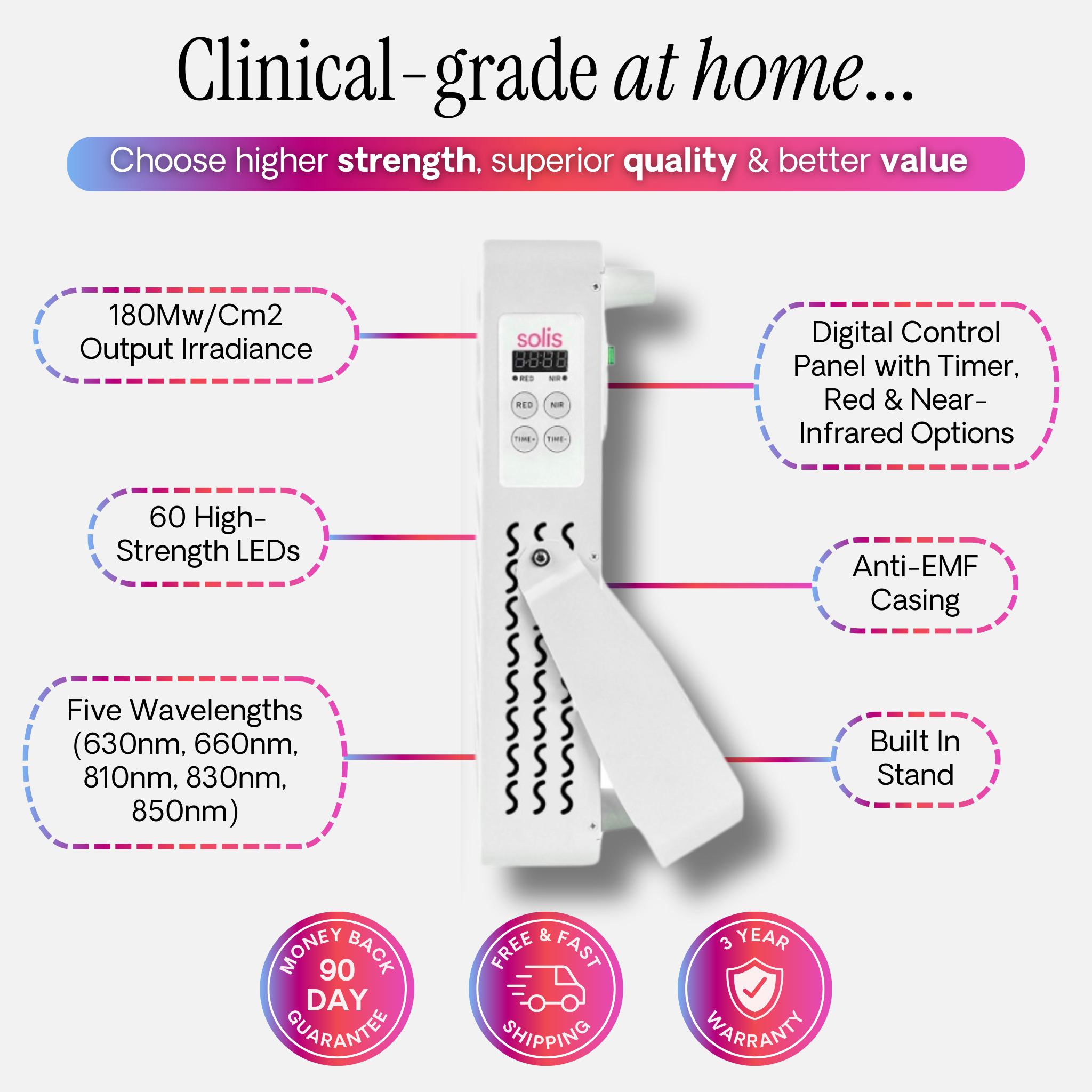
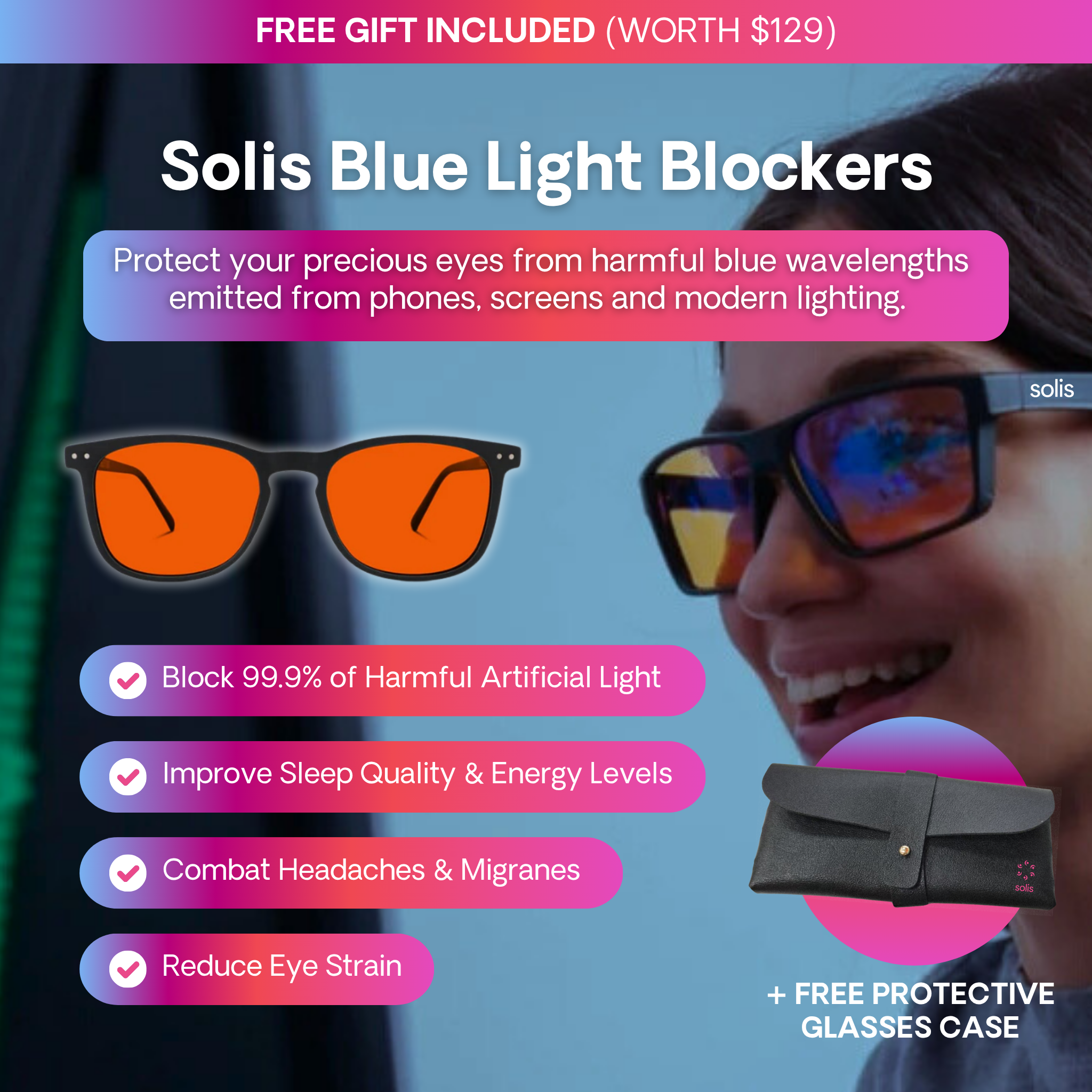
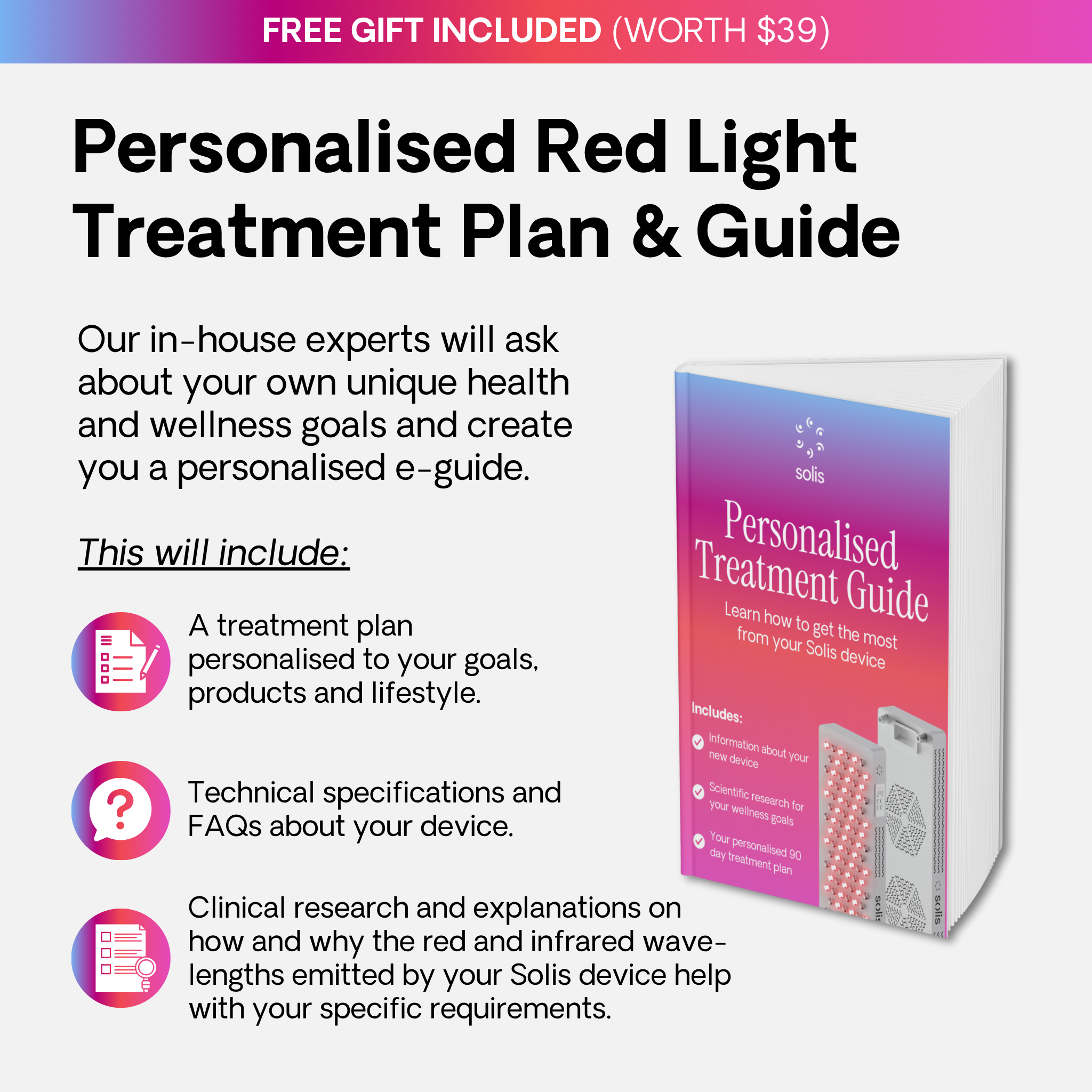
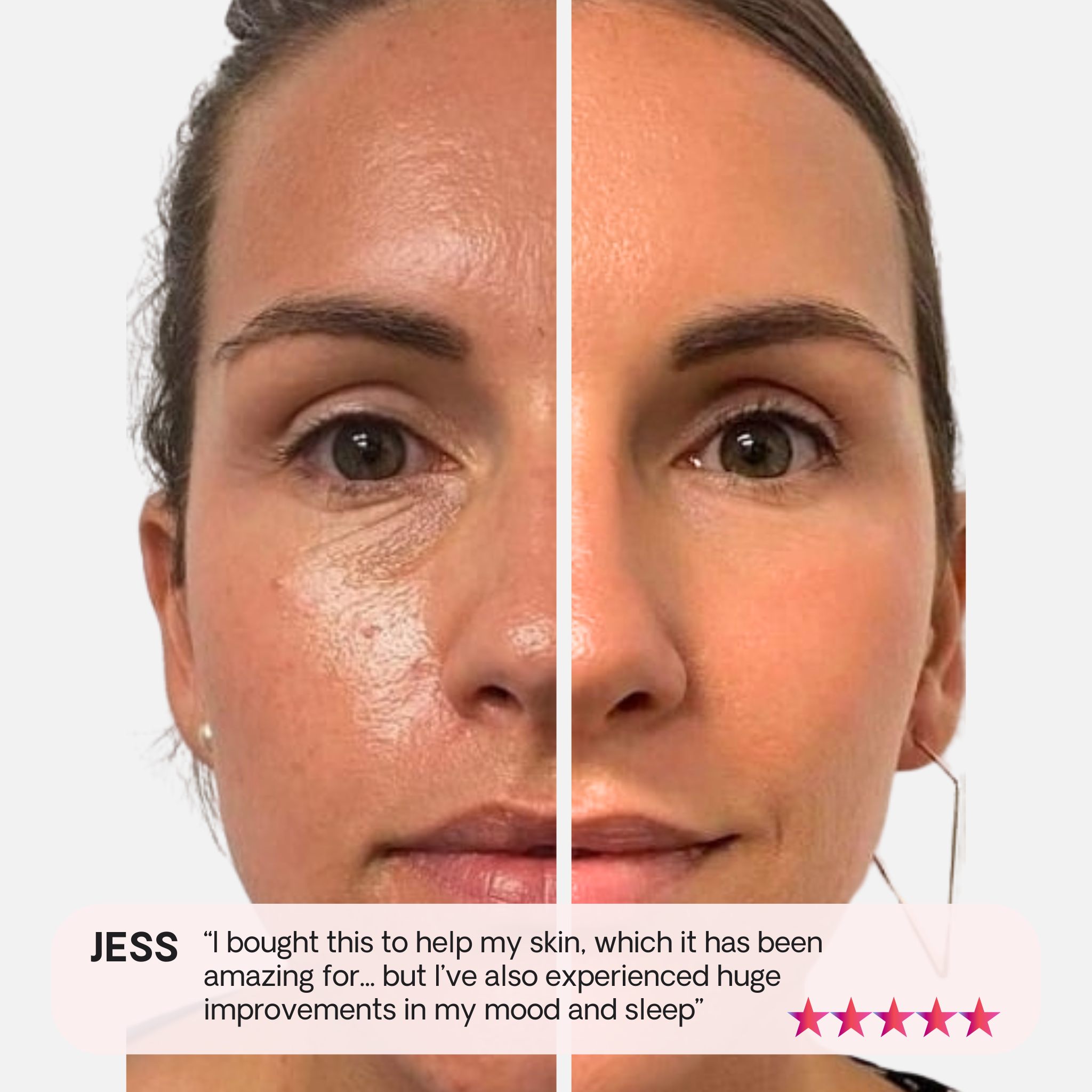
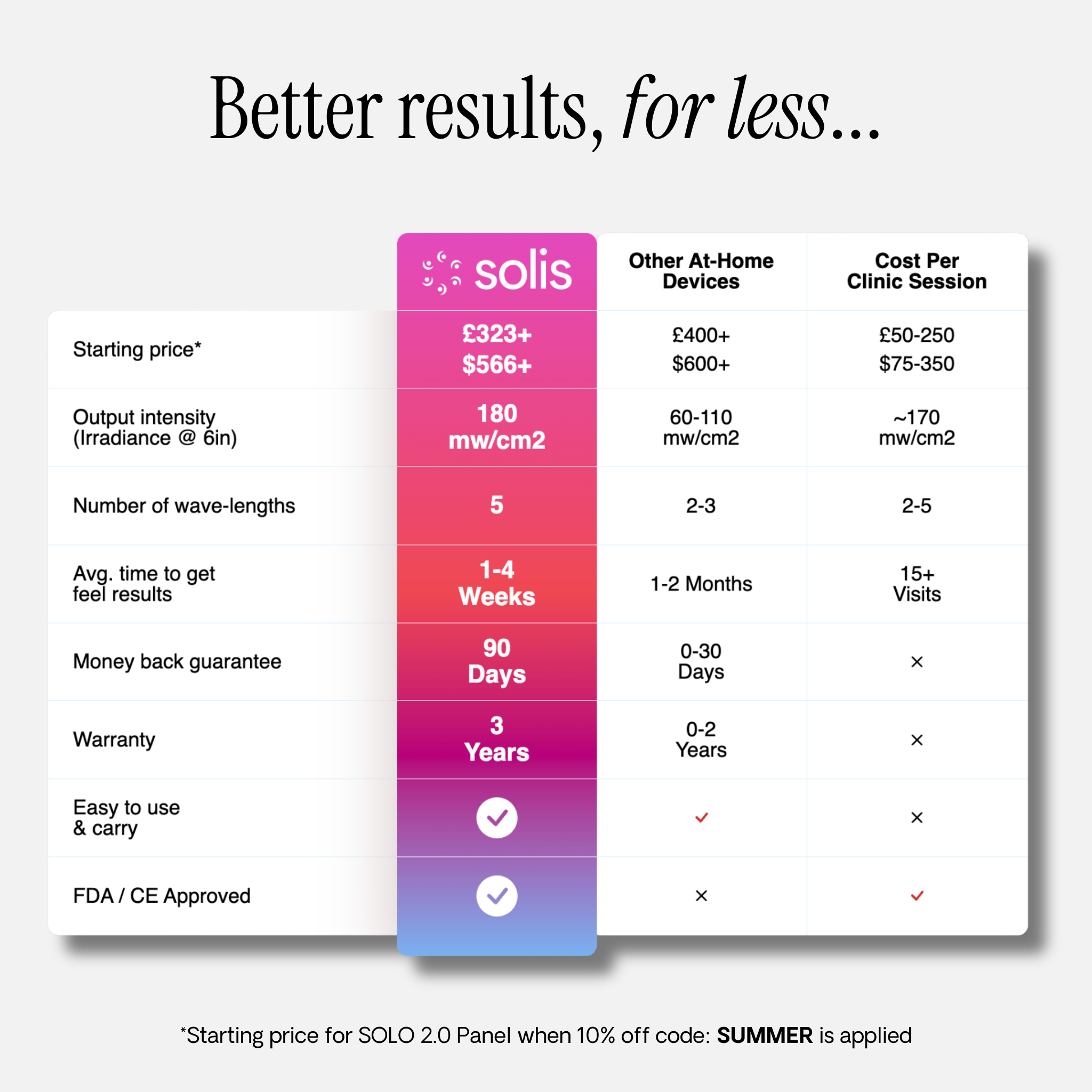
ADD TO CART TO GET EXTRA 15% OFF. ENDS TODAY.
What else does the science say?
The sleep-enhancing properties of red light therapy have been increasingly validated through sleep science research. Clinical studies show these specific wavelengths help regulate circadian rhythm, enhance melatonin production, and modulate cortisol levels that affect sleep quality. Researchers have documented improvements in sleep onset, duration, and deep sleep phases following consistent evening use. This growing evidence explains why sleep specialists increasingly recommend professional-grade red light therapy as a natural approach to addressing sleep disruptions without the side effects associated with medications.
RESTORE YOUR SLEEPIn a 14-day clinical trial, Zhao et al. (2012) exposed elite female basketball players to whole-body red light sessions (~658 nm) for 30 minutes each night. The results were striking – the red-light group showed much better sleep quality (lower Pittsburgh Sleep Quality Index scores) at post-test, whereas the placebo group (no light) saw virtually no improvement. Independent measures confirmed that sleep improved only in the red-light group, accompanied by a healthy rise in their nighttime melatonin levels (the sleep hormone) that correlated with better sleep. Meanwhile, the control group experienced no significant change in sleep or melatonin. This demonstrates how the Solis red wavelengths can non invasively boost sleep quality – offering nearly three times greater improvement in sleep indices than no treatment in just two weeks.
(PMID: 23182016)
A randomized controlled trial by Chen et al. (2019) treated chronic insomnia patients with low-level 655–660 nm laser therapy on acupuncture points. Only the laser-treated patients (Group A) enjoyed dramatic sleep benefits: they fell asleep faster, woke up fewer times during the night, and achieved higher sleep efficiency, whereas sham-treated controls saw no such gains. In fact, the laser group’s sleep latency dropped and their sleep duration rose to healthy levels, with zero medication – a drug-free therapy. By the end of the 5-week treatment, insomnia sufferers had regained restful sleep patterns that weren’t present in the control group. These results highlight how Solis-range red light can act as a powerful, non-pharmacological insomnia remedy, helping patients fall asleep quicker and stay asleep longer – improvements unattainable with placebo.
(PMID: 31312225)
A 2023 sham-controlled trial by Kennedy et al. tested a wearable combo red/near-infrared collar (660 nm, 810 nm, etc.) on adults with sleep complaints. Participants who used the active Solis-range light device every other night for 3 weeks reported far better sleep and relaxation than those using a sham device. Objective actigraphy showed similar total sleep, but subjectively the red/NIR group felt more refreshed and had improved mood and energy each day, while the placebo group did not. Notably, the light-therapy users saw a 17.5-point increase in relaxation and daytime function, compared to an 18.7-point drop in performance among sham users. Both groups had slight insomnia score improvements, but only the red/NIR group experienced these meaningful boosts in sleep quality and next-day alertness. This placebo-controlled benefit showcases the sleep-enhancing power of Solis wavelengths in a convenient home device.
(PMID: 37141002)
Maintaining our circadian hormone cycle is key for good sleep. Wright and Lack’s landmark study (2001) found that unlike blue or green light, exposure to red light (~610–660 nm) at night did not suppress melatonin production at all. In fact, red light even slightly hastened the onset of melatonin (the “Dim Light Melatonin Onset” came earlier), whereas shorter blue/green wavelengths caused melatonin to be delayed and reduced. In practical terms, people under red light had their bodies ready for sleep almost an hour earlier than those under other lights. By avoiding melatonin suppression, Solis-range red light supports your natural circadian rhythm instead of disrupting it. This means better alignment of your sleep-wake cycle – a crucial foundation for quality sleep – as demonstrated by red light’s 0% impact on melatonin (vs ~70% suppression by blue light).
(PMID: 11763987)
A 2023 clinical trial on fibromyalgia patients – who often suffer poor sleep – showed remarkable sleep improvements after six weeks of full-body red and near-infrared therapy (660 nm + 850 nm, 50/50). Every participant started with severe sleep disturbances, but after Solis-wavelength treatment, 68.4% of patients improved their sleep by at least 20%. On average, sleep quality (Jenkins score) improved by 33.6%. In fact, over half the patients (52.6%) moved all the way from the “high disturbance” category to the “little sleep disturbance” category – essentially normalising their sleep. Prior to therapy, 0% had such good sleep. Patients also reported feeling more rested and less fatigued. None of these gains occurred without the red/NIR therapy, underscoring its role. This feasibility study highlights how the same dual wavelengths used in Solis devices can produce life-changing sleep improvements (up to nearly 89% better) in tough conditions like fibromyalgia.
(PMID: 37753995)
Even in patients with dementia, near-infrared light shows sleep benefits. In a pilot RCT by Chao et al. (2019), eight dementia patients were given 12 weeks of at-home 810 nm PBM therapy (transcranial + intranasal, using a Solis-range NIR headset) or usual care. The treated group not only showed significant cognitive improvements but also better sleep quality and nighttime behaviour compared to controls. Caregivers noted that PBM recipients slept more soundly and had fewer negative nighttime outbursts, whereas the control patients’ sleep continued to suffer. By trial’s end, PBM patients had improved functional ability and mood alongside their improved sleep, and importantly no side effects were observed. This suggests Solis-range 810 nm light can safely enhance sleep and calm in even severe neurodegenerative conditions, offering hope for non-drug management of sleep disturbances.
(PMID: 31050950)
A 2022 randomised trial on adults with subjective cognitive decline (an early risk stage of Alzheimer’s) found that just 6 days of 810 nm near-infrared light therapy led to measurable sleep gains. Participants received 40-minute transcranial (through the skull) NIR sessions targeting the frontal cortex for six consecutive days. By the fifth day, the PBM-treated group’s sleep efficiency had significantly improved, while the sham-treated group had no such improvement. Although between-group differences were subtle, only those getting the real Solis-spectrum NIR light saw their time spent asleep (vs. in bed) increase night-to-night. The NIR group also performed better on memory tests (88.6% vs 79.6% accuracy) than controls, potentially aided by their superior sleep. These findings show that even a short course of Solis-range NIR can acutely enhance sleep quality in older adults, aligning with the idea that better sleep supports better brain function.
(PMID: 35491787)
Testimonials
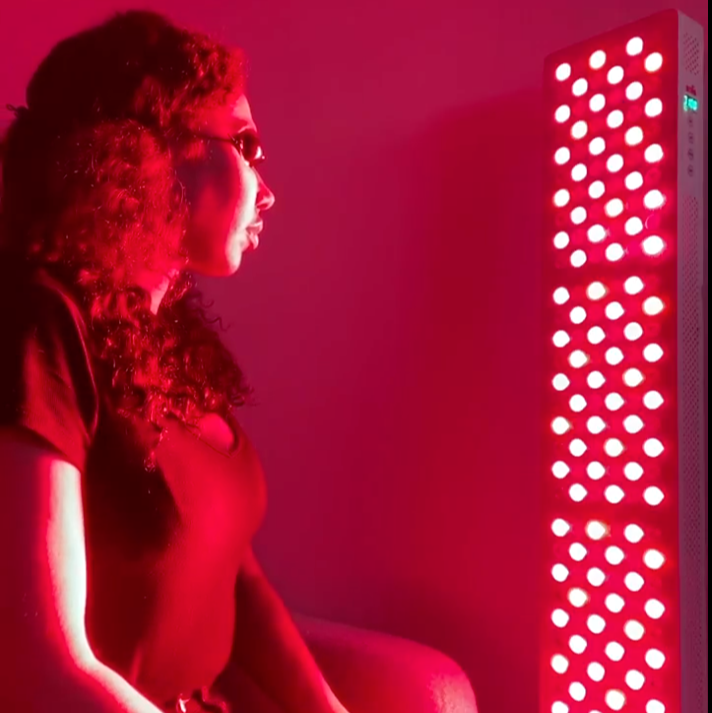
Elena A.
The Best Biohack Out There.
As someone who's tried literally everything for sleep (melatonin, magnesium, CBD, prescription meds, weighted blankets, white noise, meditation apps, sleep restriction therapy...), I can confidently say nothing has worked as effectively or sustainably as my nightly red light sessions. My therapist noticed the difference in our sessions before I even mentioned my new sleep routine. If you value your mental health, red light therapy is the sleep investment to make.
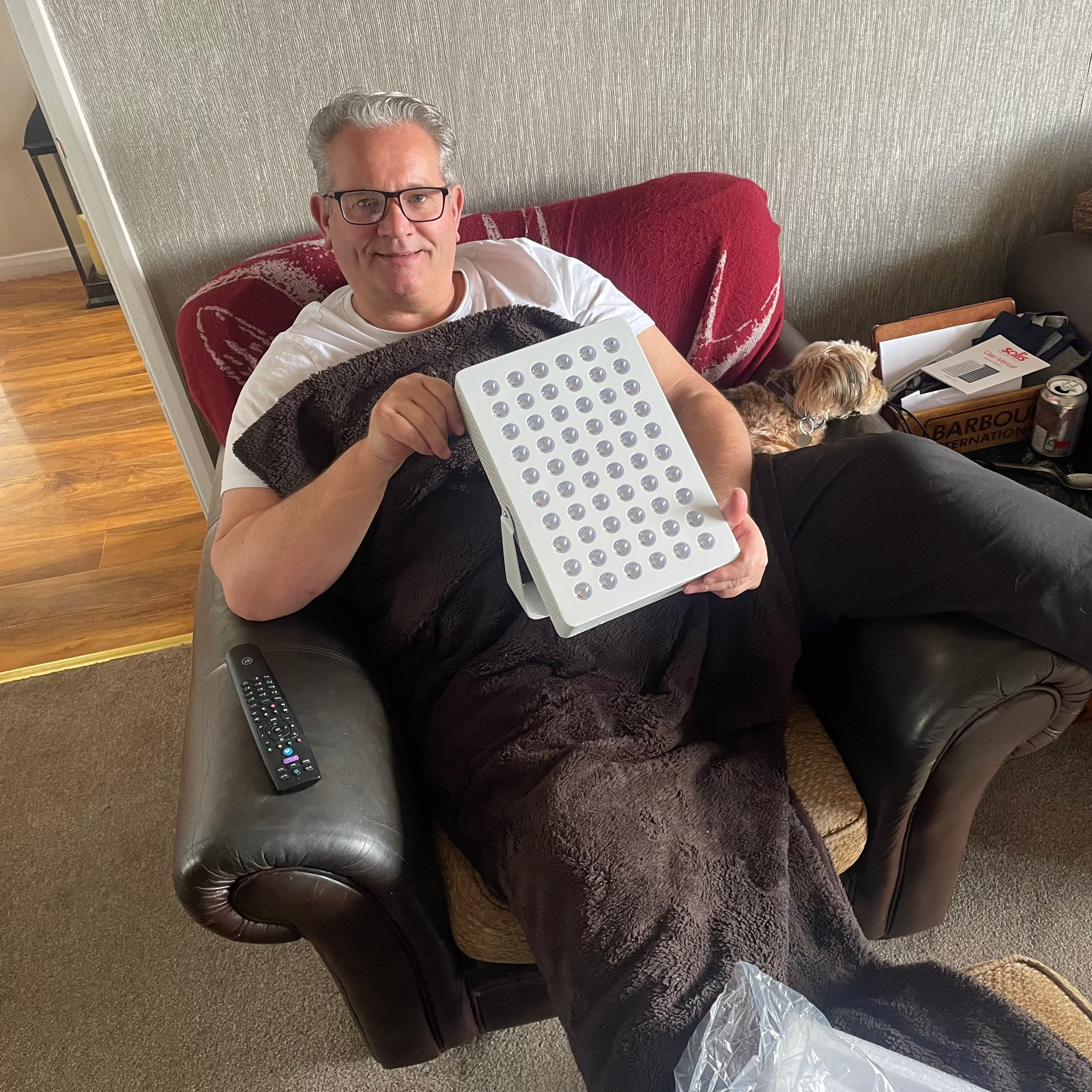
Marcus C.
The Night Shift Survival Tool.
Working overnight security for 15 years destroyed my body's natural sleep patterns. I'd gotten used to feeling like a zombie half the time, relying on energy drinks to function. My wife ordered the Solis panel after reading about its effects on circadian rhythms. I was annoyed at first—another gadget we didn't need. But after three weeks of using it when I got home from night shifts, something remarkable happened. My daytime sleep went from fragmented and unsatisfying to deeply restorative. I've cut my caffeine consumption in half, and my wife says my mood is completely different. For anyone working against their body's natural clock, this technology is a game-changer. It doesn't fight your schedule; it helps your body adapt to it.
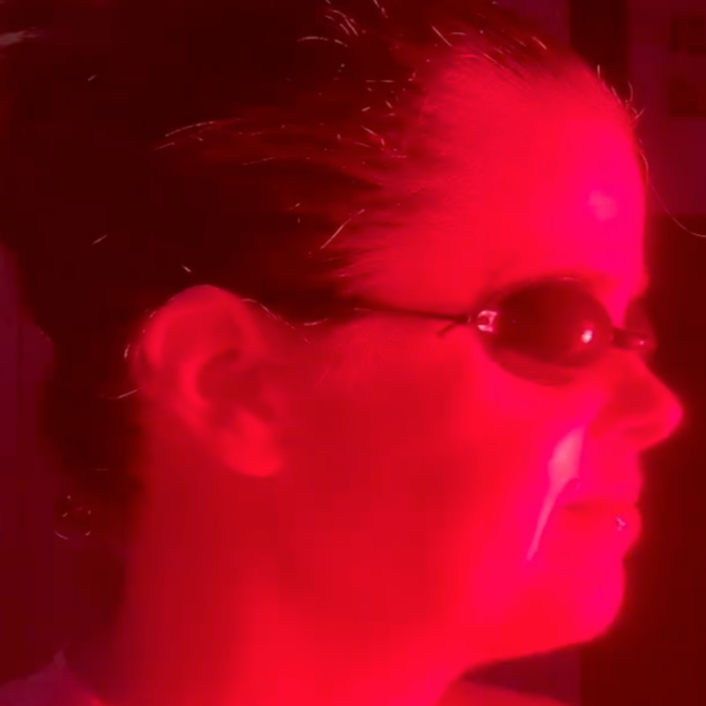
Alexandra L.
The Unexpected Relief
I purchased my Solis panel for skin issues, not even considering its sleep benefits. Three surprising things happened within a month: First, my lifelong sleep anxiety disappeared - that dread of another night staring at the ceiling. Second, I stopped waking up at 3 AM with racing thoughts, something I'd accepted as normal for decades. But the third change was truly unexpected—my dreams have returned. I hadn't realised how rarely I remembered dreams until they came flooding back, vivid and memorable. This tells me I'm finally reaching those deep, restorative sleep stages that had been eluding me. What started as a cosmetic investment has become essential to my mental wellbeing and daily functioning. I'm sharper, more emotionally balanced, and finally experiencing what good sleep actually feels like.
Sleep FAQs
Use this text to share information about your product or shipping policies.
How long does it take to see sleep improvements with red light therapy?
Some users notice better sleep quality, faster sleep onset, or reduced night waking within the first 1–2 weeks. For chronic sleep issues like insomnia, clinical studies suggest more consistent changes appear after 3–6 weeks of regular use.
Stick with it—sleep quality tends to build gradually, and Solis helps support long-term circadian balance.
When’s the best time of day to use red light therapy for better sleep?
The ideal time is typically 1–2 hours before bed. This helps wind down your nervous system, promote melatonin production, and signal your body it’s time to rest.
Even just 10 minutes with Solis before bed can feel like a reset for your internal clock.
How often should I use red light therapy to improve sleep?
Aim for 5 sessions per week, especially in the evening. Many people benefit from daily use—think of it like brushing your teeth for your circadian rhythm.
The more consistent your sessions, the stronger the results.
Can red light therapy help with insomnia?
Yes. Clinical studies show red and near-infrared light can help people fall asleep faster, stay asleep longer, and reduce nighttime waking—without medication.
Solis uses the same wavelengths shown to calm the brain and restore healthy sleep cycles.
Do I need to shine the light directly on my head to get sleep benefits?
Not necessarily. While applying light directly to the head can be beneficial, studies show that exposing large areas of skin - especially in the evening - can also regulate your circadian rhythm and improve sleep.
Using Solis on your body or face before bed can still help calm your system and promote deeper rest.
If red light gives me energy in the morning, won’t it make me too alert before bed?
Not at all. Red and near-infrared light don’t stimulate your nervous system like caffeine or blue light. Instead, they help regulate your body’s natural rhythm. In the morning, that means supporting wakefulness; in the evening, it means promoting relaxation and melatonin release - especially when used in a dark, quiet space.
Think of Solis as a signal for balance - not stimulation - helping your body feel energised by day and deeply rested by night.
Can I use red light therapy in the morning and still get sleep benefits?
Yes - morning sessions help reset your body clock and boost energy, while evening sessions help wind you down. Both can support a more stable circadian rhythm over time.
Think of Solis as your light-based tool to balance energy by day and sleep by night.
Sleep Reset Usage Guide
Optimal Positioning
Position your Solis panel 12-18 inches from your body in your bedroom, ideally 1-2 hours before your target bedtime. For optimal sleep benefits, place the panel at torso or chest level while you're in a relaxed seated or reclined position. This positioning allows the therapeutic wavelengths to influence your parasympathetic nervous system and support natural melatonin production. Avoid using the panel too close to bedtime (within 30 minutes).
Dosage Protocol
For sleep enhancement, 15-20 minute evening sessions provide optimal results. Use both Red (630nm/660nm) and Near-Infrared (810nm/830nm/850nm) settings simultaneously for comprehensive sleep benefits—the red wavelengths help regulate melatonin production while NIR wavelengths promote deeper relaxation and cellular regeneration during sleep. For chronic sleep issues, begin with consistent daily evening sessions for two weeks to reset your circadian rhythm, then maintain with at least 5 sessions weekly. Adding morning sessions can further stabilise your sleep-wake cycle when used within 30 minutes of waking.
Habit Stacking
Bedtime Reading Companion: Position your panel while enjoying your evening book combining the relaxing activity with therapeutic light that prepares your body for deep, restorative sleep.
Nighttime Tea Ritual: Enjoy your sleep-supporting herbal tea (chamomile, valerian, lavender) during your red light session—pairing two natural sleep enhancers for a powerful calming effect.
Guided Sleep Meditation: Listen to a sleep-focused guided meditation during your red light session - training your brain to associate both practices with the transition to sleep.
Reminder: Consistency creates compounding benefits. Your body's circadian rhythm responds best to regular patterns, so maintain your red light routine at similar times each evening for optimal sleep architecture improvement.
Position your Solis panel 12-18 inches from your body in your bedroom, ideally 1-2 hours before your target bedtime. For optimal sleep benefits, place the panel at torso or chest level while you're in a relaxed seated or reclined position. This positioning allows the therapeutic wavelengths to influence your parasympathetic nervous system and support natural melatonin production. Avoid using the panel too close to bedtime (within 30 minutes).
For sleep enhancement, 15-20 minute evening sessions provide optimal results. Use both Red (630nm/660nm) and Near-Infrared (810nm/830nm/850nm) settings simultaneously for comprehensive sleep benefits—the red wavelengths help regulate melatonin production while NIR wavelengths promote deeper relaxation and cellular regeneration during sleep. For chronic sleep issues, begin with consistent daily evening sessions for two weeks to reset your circadian rhythm, then maintain with at least 5 sessions weekly. Adding morning sessions can further stabilise your sleep-wake cycle when used within 30 minutes of waking.
Bedtime Reading Companion: Position your panel while enjoying your evening book combining the relaxing activity with therapeutic light that prepares your body for deep, restorative sleep.
Nighttime Tea Ritual: Enjoy your sleep-supporting herbal tea (chamomile, valerian, lavender) during your red light session—pairing two natural sleep enhancers for a powerful calming effect.
Guided Sleep Meditation: Listen to a sleep-focused guided meditation during your red light session - training your brain to associate both practices with the transition to sleep.
Reminder: Consistency creates compounding benefits. Your body's circadian rhythm responds best to regular patterns, so maintain your red light routine at similar times each evening for optimal sleep architecture improvement.

